Just a quick update, bookings for the Becket Lecture are going well, so if you are new to the CKHH blog and are interested in hearing the acclaimed historian Michael Wood speak on Tuesday 11 July about Theodore and Hadrian and the school at Canterbury, further details and how to book can be found at bit.ly/Becket2023 or email artsandculture@canterbury.ac.uk or call 01227 922994.

Now to just mention a couple of things before we come to this week. I have sent a summary of the talk from last week to Martin Crowther for the Maison Dieu project website and hopefully that will be up soon. Then last Saturday, Dr Diane Heath was based at Dover College refectory in the magnificent medieval building as part of Dover’s Family Friendly Pilgrim Trail where Diane was offering the chance to make pictures of medieval animals, just as you might find in the medieval bestiary. This is part of her NLHF-funded ‘Medieval Animals Network’ project. Also as part of the trail, Kieron Hoyle was based in St Edmund’s chapel where children could design (pilgrim) badges, as well as look for the small crosses scratched on the interior chapel wall. Kieron is researching the Tudor history of the Maison Dieu and its relationship with the town and the crown for her PhD.
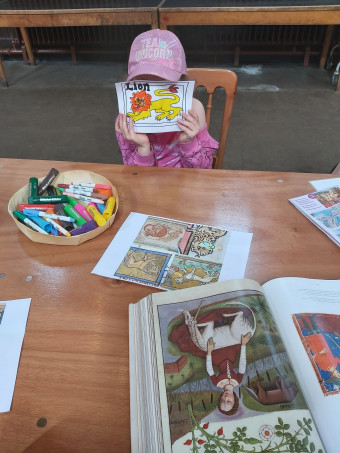
Moreover, we will be back in Dover again this Saturday for the Kent Archaeological Society’s ‘Kent History Showcase’ and Peter Joyce as KAS Outreach Officer which is being hosted by Dover Museum and the NLHF-funded Maison Dieu project. This time we will have two stalls in Dover Museum itself to showcase the CKHH’s activities, those of the Lossenham project wills group and ‘Medieval Animals Heritage’. In addition, Diane will be giving one of the short talks there, while another will be given by Michelle Crowther, who will be representing the ‘Kent Maps’ project, and Professor Paul Bennett for the Dover Bronze Age Boat Trust. This promises to be a very exciting day, so do come along to join us to find out about our many activities and/or just to say hello, we will be delighted to see you.
For the remainder of what I intend will be a shorter blog than last week, I’m going to give a snapshot of Keith Parfitt’s joint FCAT and CKHH talk that he gave to a packed lecture theatre on Wednesday 31 May. As his title said, he has been “fossicking” (to rummage or search around) in east Kent for 50 years which means that, like Paul Bennett, what he doesn’t know about the area isn’t worth knowing! Also, of course, there was no way he could fit such a rich archaeological career into an hour’s lecture so we were treated to a select number of sites and finds spanning a period from 1972 until today, because even though Keith has retired from CAT, he is still out digging during the week and at weekends, his two current projects being the KAS excavation at Lees Court and the Dover Archaeological Group’s continuing work at Old St Alban’s Court, Nonington.
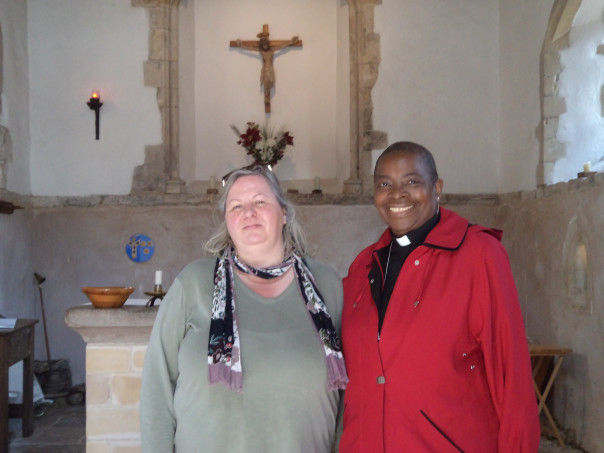
However, to return to where it all began, Keith’s first job as an archaeologist was a site that would become part of the A2 dual carriageway between Canterbury and Dover. Working only at weekends, they found a very deep ‘v’ shaped ditch, late Bronze Age pottery and three Anglo-Saxon skeletons in a poor state of preservation. However, the site didn’t reveal any gold objects, Keith’s next topic. In fact, as he said, he hasn’t found any, rather he has been in the vicinity when others have “struck lucky”. For example, he was one of the team working on a midden in Dover later in 1972 where a 6th-century gold ring with a garnet in the centre was uncovered.
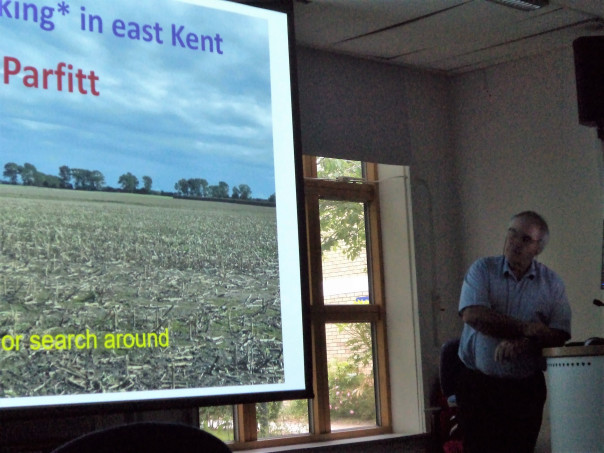
You might have thought that the Buckland Anglo-Saxon cemetery where Keith and team were uncovering 250 graves would have given Keith such a find, but instead that fell to Andy Linklater, another long-time member of Canterbury Archaeological Trust. This excavation was challenging being on the side of a 1 in 4.5 hill and the need for speed, a not uncommon feature linked to developer-led archaeology. Due to the size and complexity, experts from the British Museum were called in and many of the Buckland finds are now on display in London, albeit the galleries are arranged by theme not by place. So between Vera Evison’s heroic work aided by a single digger and Keith’s team on what has become known as the Buckland Anglo-Saxon cemetery, over 400 Anglo-Saxon graves have been found, hers above the railway line dating from the 7th century, and Keith’s below the railway line from the 6th century – the Anglo-Saxons gradually moved up the hill. Both excavations have been published, another hallmark of Keith’s dedication to east Kent archaeology.
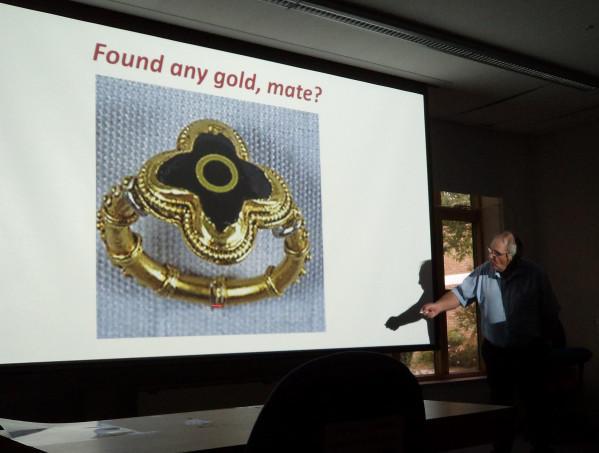
Moving on and perhaps to an excavation that Keith is popularly associated with which came as a result of the finding of the Ringlemere gold cup. The consequent dig revealed a complex natural and man-made landscape that included a Bronze Age mound, a massive ring ditch (42 metres in diameter), 2 ‘L’ shaped slots at the centre, late Neolithic pottery, possibly 3 Neolithic hearths, whole beakers in pits, and some Anglo-Saxon graves. Again, the British Museum was involved and this time it was the Museum’s publication written by Keith and Stuart Needham.
Ash in 2021 brought Keith his ‘pot of coins, in this case Roman coins, the scattered late Roman hoard producing in total of over 3000 coins. For even thought the plough had taken off the top half of the pot, they did find the bottom half still in situ and from the excavation an early Roman settlement, perhaps with a watermill, has been added to the gazetteer of Roman occupation in the county. As Keith said, the site isn’t that far from Richborough.
Coming forward in time by several centuries, Keith’s next site was St Radigund’s Abbey, a Premonstratensian house founded in the late 12th century. A few buildings survived Henry’s Dissolution, the main farmhouse being the monastic refectory, but the church is no more than a crop mark. Keith and team excavated a damaged Victorian outhouse prior to its conversion to a holiday cottage where they discovered that they had the monastic warming room with a hearth. Lead smelting seeming took place at the site around the time of the Dissolution, lead from the roofs being a highly prized commodity, and some of it may have found its way to Sandgate castle. One especially attractive find was a section of an effigy, presumably of an abbot, from a funeral monument, which Keith thinks may now be in the farmhouse rockery.
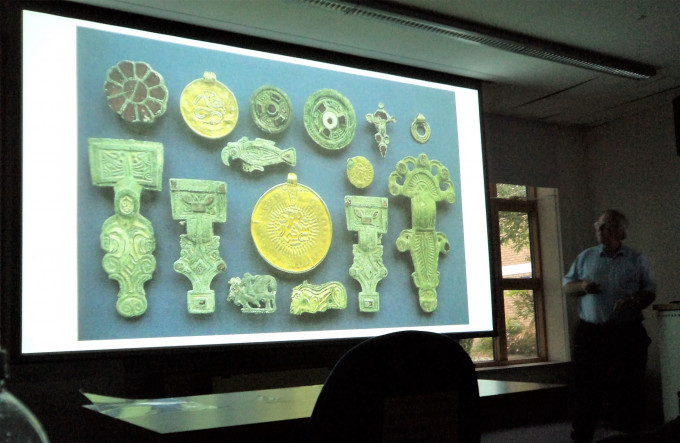
Returning to east Kent’s early history, Keith provided a resume of excavations at Northbourne (1974) and Mill Hill, Deal (1988), the former revealing a Roman cemetery and for Keith the first complete Roman pot that he had found, the latter the burial of an Iron Age warrior wearing a decorated crown and having a sword and hide shield. Interesting there were hair strands on the crown, a remarkable survival. Nonetheless, perhaps the other survival that Keith is most known for is the Dover Bronze Age boat. As he said, everyone involved will always remember 28 September 1992 and the magnificent discovery of a section of a boat. Of course, this has spawned books, conferences and the Dover Bronze Age Boat Trust, as well as the replica and the gallery at Dover Museum which is devoted to this find. Currently, the gallery is due for an overhaul and the replica, in addition to having been paddled off the east Kent coast and down the Thames, has been on display in England and on the European mainland.
This brings me almost to the end of this report, but Keith also mentioned the Dover Archaeology Group’s work on the Whitefriars at Sandwich involving the finding of “lots of walls”. This was the third dig on site and Keith has collected together all the archaeological reports from these and one of his unfinished projects is to get this written up and published. Some shorter pieces have come out already as well as in Sandwich – ‘The Completest Medieval Town in England’ by Keith, Helen Clarke, Sarah Pearson and Mavis Mate. And, finally, as you might expect, he is looking at some point to publish on the landscape around Old St Alban’s Court and Lees Court.
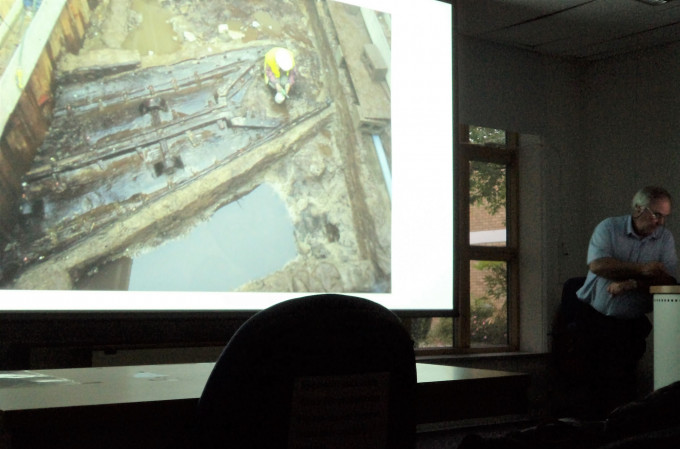
So ended a fantastic tour de force, warmly appreciated by his audience and, as Dr John Williams, chairman of FCAT, said, everyone wishes Keith an enjoyable and long retirement, although he might find it useful to learn to say “no”, at least sometimes!
 Centre for Kent History and Heritage
Centre for Kent History and Heritage Sheila Sweetinburgh
Sheila Sweetinburgh 1717
1717

